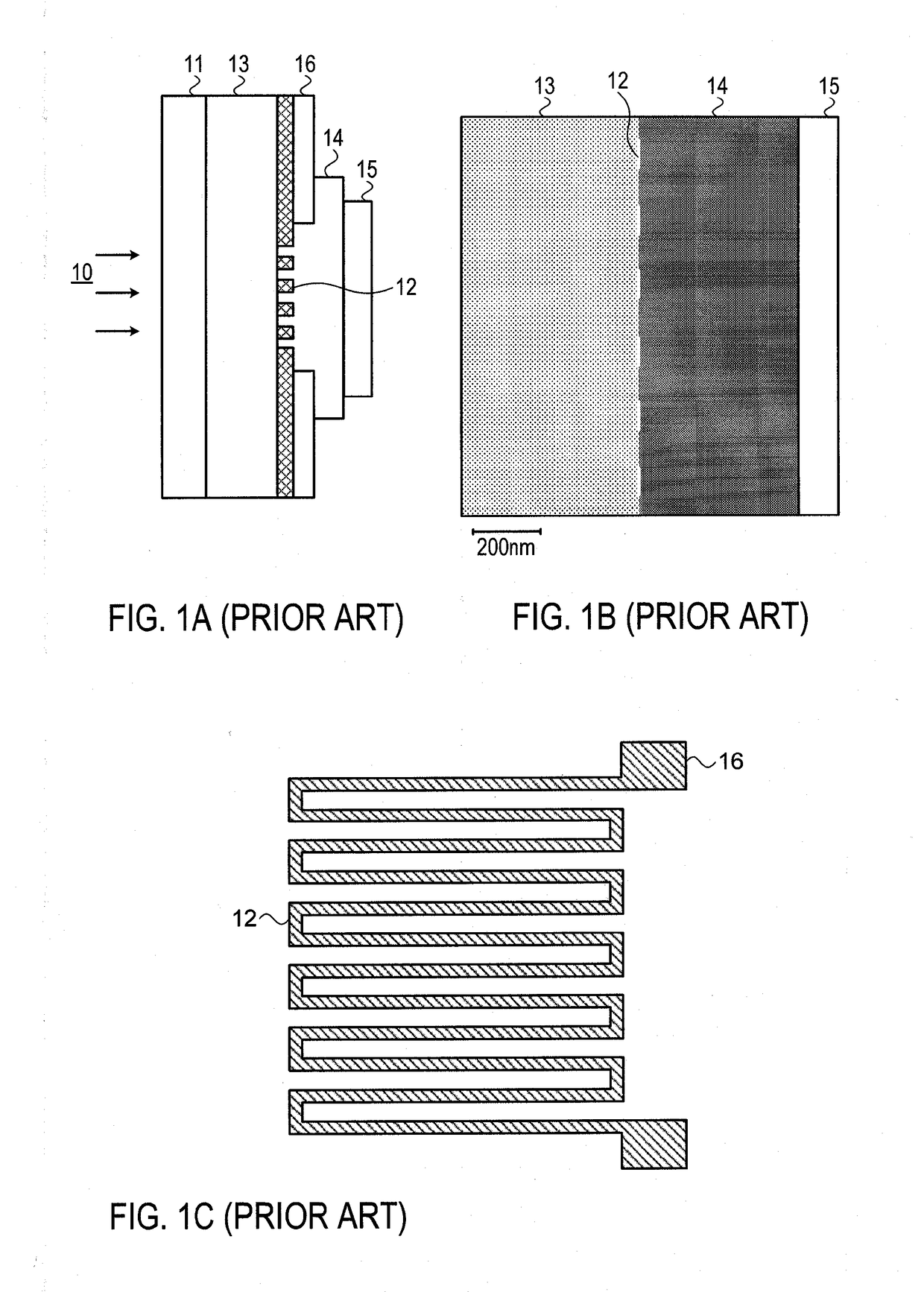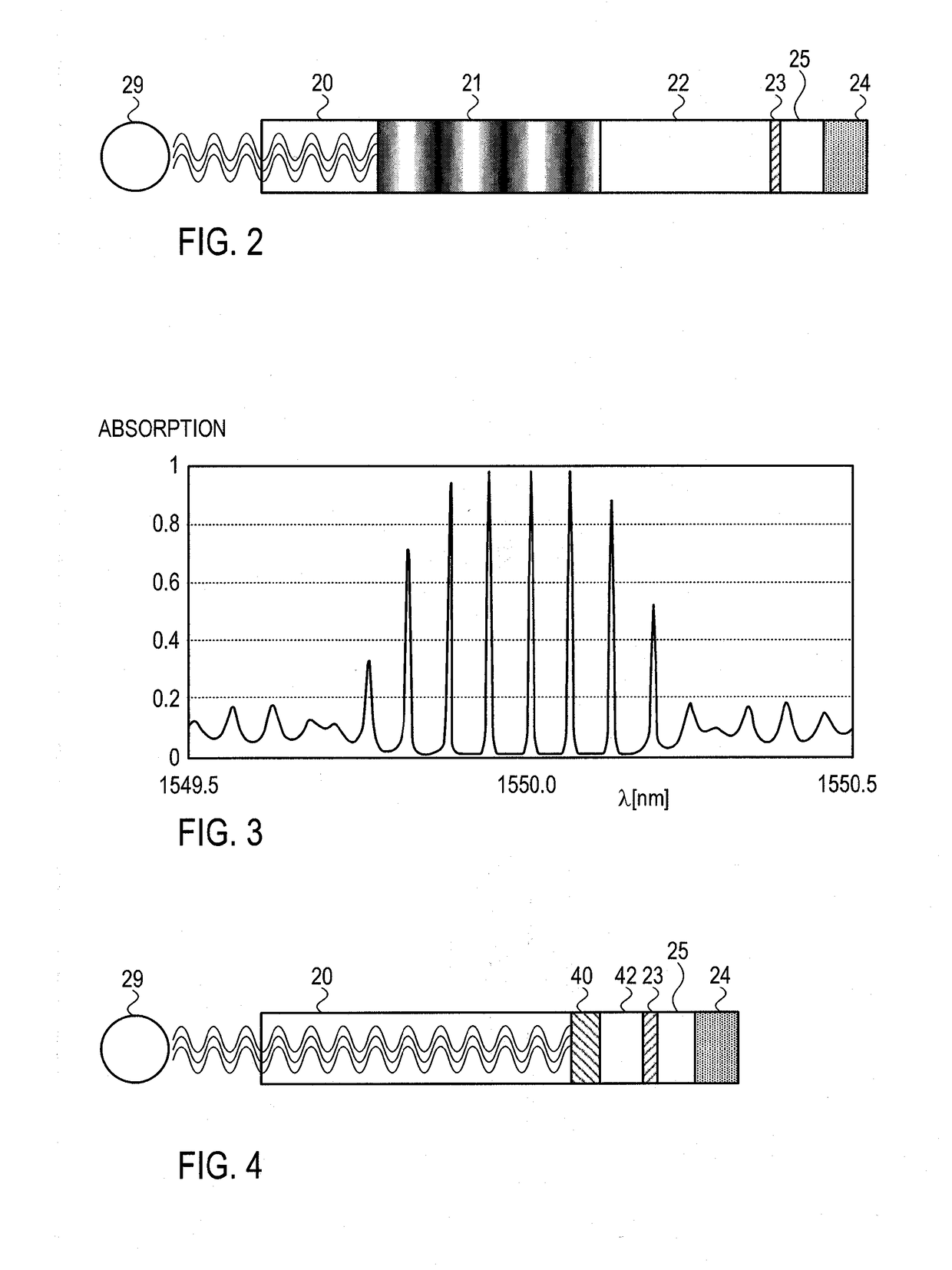Fiber optical superconducting nanowire single photon detector
a fiber optical and nanowire technology, applied in the field of low-level light detectors, can solve the problems of low detection efficiency, low coupling efficiency, and low detection efficiency of either system, and achieve the effects of increasing detector efficiency, precise alignment of detectors, and maximizing coupling efficiency
- Summary
- Abstract
- Description
- Claims
- Application Information
AI Technical Summary
Benefits of technology
Problems solved by technology
Method used
Image
Examples
Embodiment Construction
[0037]Reference is now made to FIGS. 1A, 1B and 1C, which illustrate schematically a prior art SNSPD, of the type shown in the above referenced article entitled “Nanowire Single Photon Detector with an Integrated Optical Cavity and Antireflection Coating” by K. M. Rosfjord et al, published in Optics Express, Vol. 14, No. 2, pp. 527-534 (2006). FIG. 1A is a schematic representation of the device, and FIG. 1B is a representation of a transmission electron micrograph of the cross-section of such a fabricated device. The light is input to the device by coupling from the end of a fiber optical feed 10, through an antireflection coating (ARC) 11 at the optical input surface to reduce loss of photons from reflection at this surface. The NbN nanowire device 12, as shown schematically in FIG. 1C, is formed on a sapphire (Al2O3) substrate 13, and on top of it, the optical cavity is formed of a Hydrogen silsesquioxane (HSQ) dielectric layer 14 with a high reflective Ti / Au mirror layer 15 depos...
PUM
 Login to View More
Login to View More Abstract
Description
Claims
Application Information
 Login to View More
Login to View More - R&D
- Intellectual Property
- Life Sciences
- Materials
- Tech Scout
- Unparalleled Data Quality
- Higher Quality Content
- 60% Fewer Hallucinations
Browse by: Latest US Patents, China's latest patents, Technical Efficacy Thesaurus, Application Domain, Technology Topic, Popular Technical Reports.
© 2025 PatSnap. All rights reserved.Legal|Privacy policy|Modern Slavery Act Transparency Statement|Sitemap|About US| Contact US: help@patsnap.com



